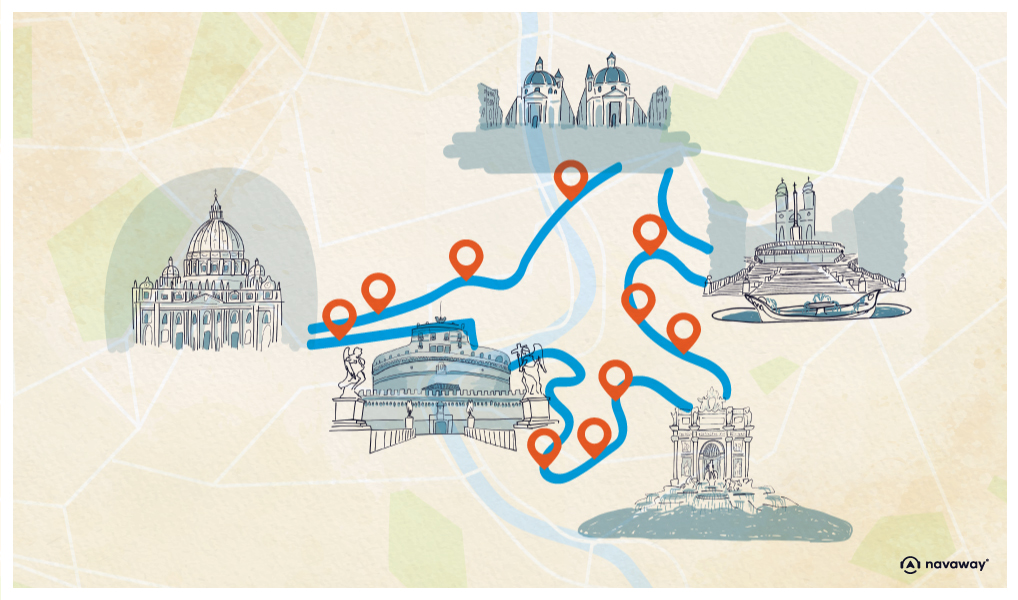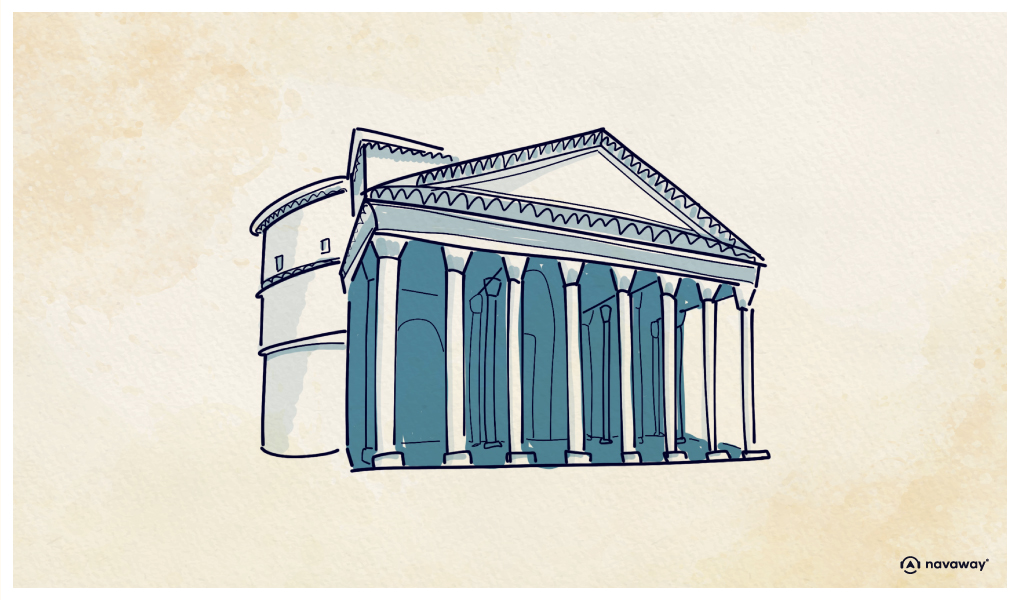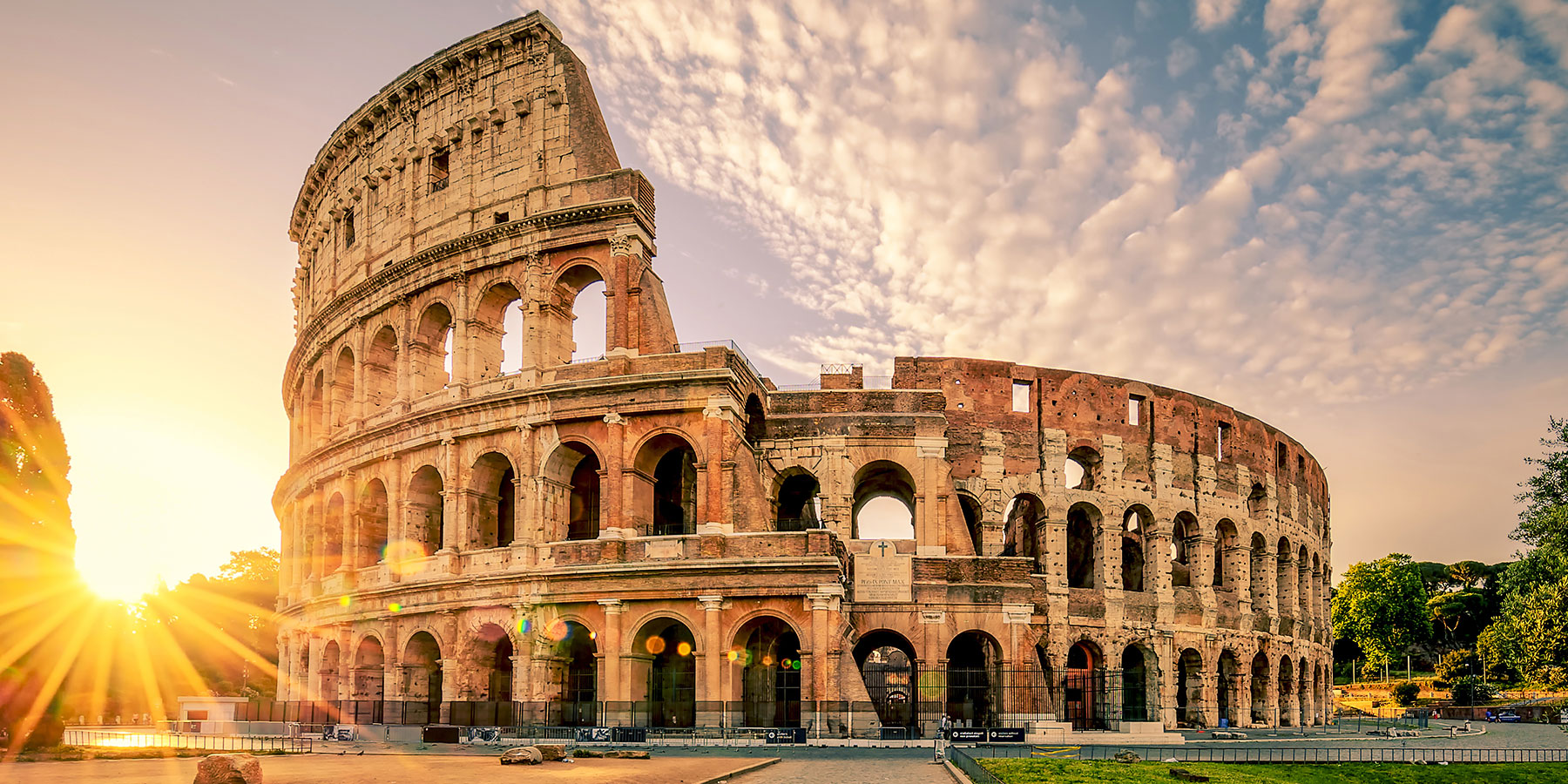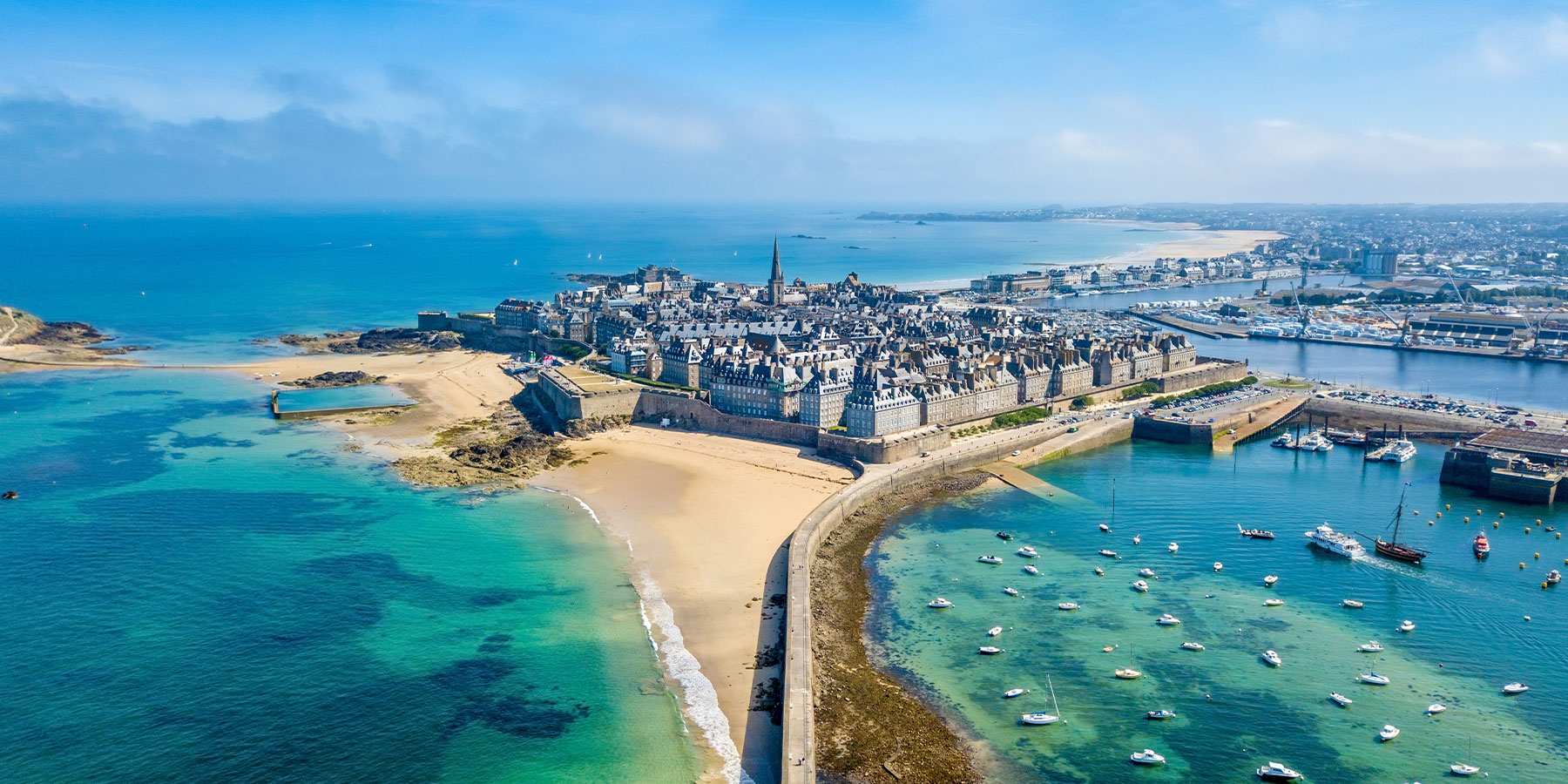
The Pantheon

This point of interest is available as audio on the tour: Visit Rome, From the Trevi Fountain to the Vatican
You’re standing before a legendary landmark, a temple to all gods – introducing the famous Pantheon of Rome.
This exceptional building was constructed in 27 BC, under the reign of Augustus. It was built by General Agrippa, a friend of Augustus who oversaw various urban planning projects at the behest of the emperor.
He chose a plot of land on the outskirts of Rome, and had the Baths of Agrippa and the Pantheon built there.
Unfortunately, nothing remains of this structure today. It was damaged and then restored after a fire in 80 AD, before being engulfed in flames in 110 AD, and then completely destroyed by a major flood of the Tiber. There was nothing left to save. The Latin inscription on the façade reads “Marcus Agrippa, son of Lucius, thrice consul, built this.”
It was Emperor Hadrian who had this inscription added here as a tribute to his predecessor, when he undertook the construction of a new Pantheon in the 2nd century. Hadrian had a thing for architecture and wanted to be remembered as a great builder. And let me tell you, the plans for the new edifice were nothing short of extraordinary. There has never been a circular temple of this size in living memory.
And I’m not just talking about the gigantic dome towering over the entire thing. The building has inspired countless artists all over the world; among them was Michelangelo, who drew inspiration from it to design St Peter’s Basilica, but never quite managed to replicate it. We can’t say for sure who the architect behind this monumental structure was, but we suspect it was Apollodorus of Damascus, who also built Trajan’s Forum. Let us go inside and take a look. The open part of the dome, the so-called Oculus, was actually Hadrian’s idea.
It was purposefully created to connect visitors with the heavens and the divine. What you see is the world’s largest reinforced concrete dome, measuring 44.4 metres in diameter and featuring an opening to the outside world allowing for the interior to be bathed in divine light. Well, occasionally, a little divine rain also finds its way in. But the Roman architects had thought of everything, as the floor of the Pantheon is slightly convex so that rainwater can drain away. Let your eyes wander and look for the circles and squares in the cosmic symbols all around you. The square windows of the dome, built to let the light in, are a fine example. Then there’s the coffered ceiling with 5 rows of 28 sunken panels – a nod to the 28 days of the lunar cycle.
You’ll also see the seven planetary deities known at the time, each in a different niche. It is believed that, in the 3rd century, the niches were decorated with bronze stars, to make the vault look like the starry night sky which was of great symbolic importance in Roman mythology. From its construction in 27 BC until the 4th century, the Pantheon was, as its name suggests, dedicated to all the gods. You see, in ancient Greek, “Pan” means all, and “theon” means divine. But by the end of the 4th century, pagan rituals had been banned in Rome and all temples had closed their doors. The Pantheon, however imposing, was no exception. It was abandoned and plundered, notably by the Visigoths during the famous sack of Rome in the 5th century. The year 608 marked a turning point in the history of the Pantheon. By then, it had already been two centuries since the Roman Empire had split in two, before vanishing altogether to give way to the Byzantine Empire. The emperor was now in Constantinople, the new capital, founded by Constantine in the ancient Greek colony of Byzantium. In short, Emperor Phocas decided to hand over the Pantheon to Pope Boniface IV, who transformed it into a catholic church, that of St Mary and the Martyrs.
Then, in the Renaissance, the temple became a burial ground. This just goes to show that the Pantheon has no ties whatsoever with its past. You see, burrying bodies inside a temple was sacrilege for the ancient Romans. Today, however, you can admire some magnificent tomb effigies. These sarcophagi are truly a work of art, housing the remains of some of the country’s greatest historical figures. You’ll see, among others, that of Victor Emmanuel II, the first King of unified Italy, that of his wife Margherita of Savoy and their son Umberto I, and that of the famous painter Raphael.
In the 17th century, Pope Urban VIII, born Maffeo Barberini, had the bronze statues of the Pantheon melted down to create the famous Baldachin in St Peter’s Basilica – hence the famous saying “What the barbarians did not do, the Barberinis did.”

Discover other tours to visit Rome

Discover Rome with app
An interactive guide through the most beautiful streets, squares, and districts
24 fun audioguides full of historical facts, anecdotes, and legends






Comments